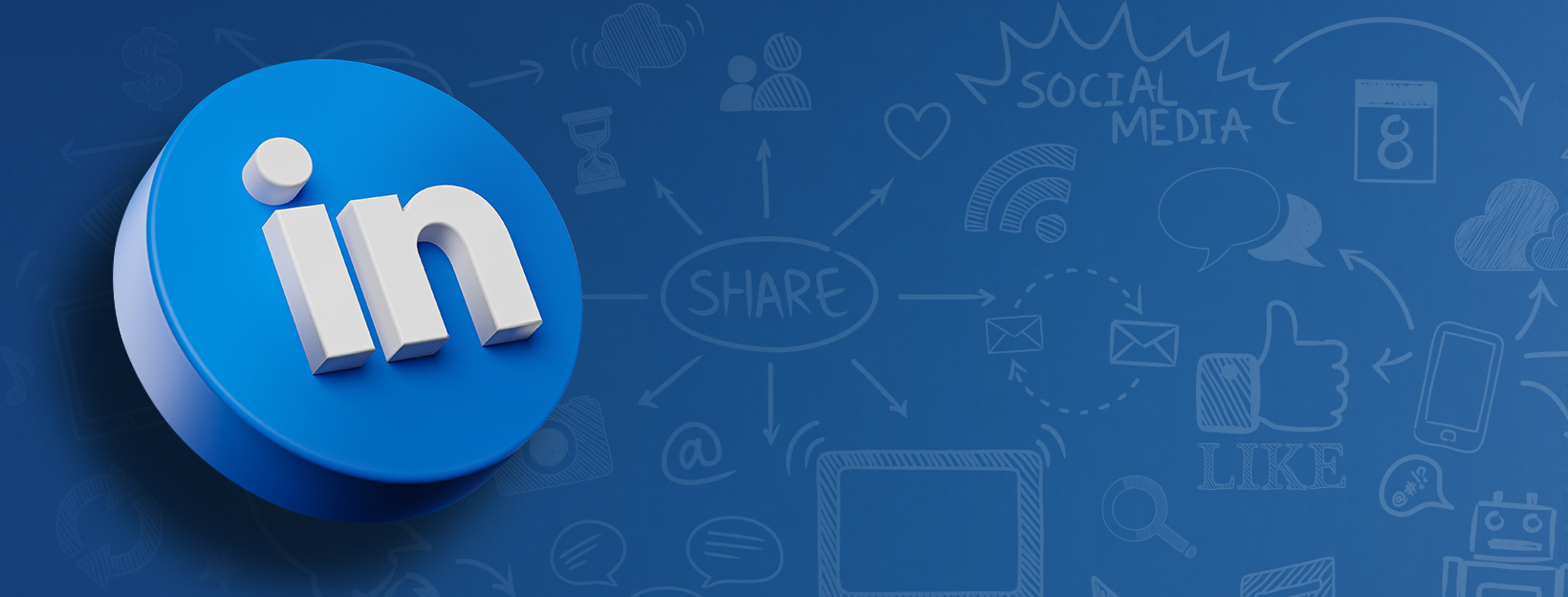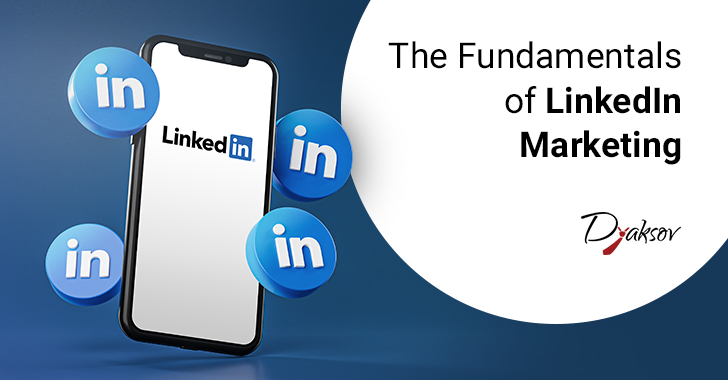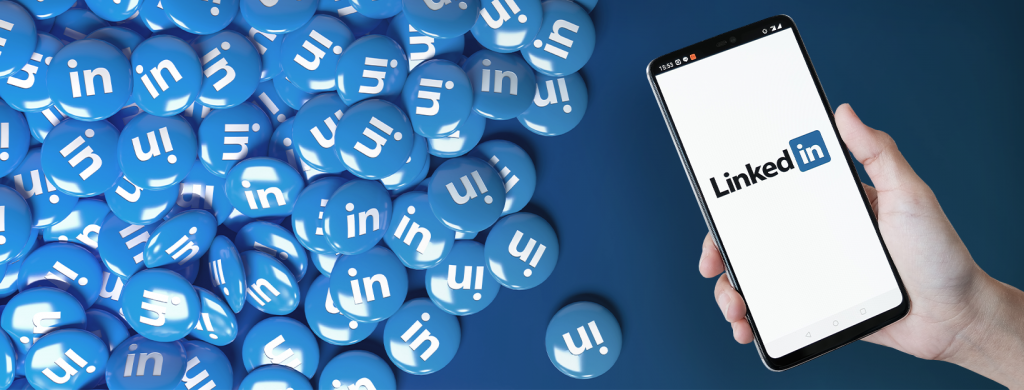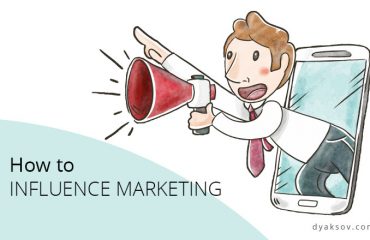LinkedIn is one of the largest social networks, and yet when it comes to online marketing, it sometimes undeservedly stays in the background. Undeservedly, because the platform provides excellent opportunities to be used not only to present yourself as a professional or your company, but also to help your business successfully achieve its marketing goals. Therefore, in this article we will pay special attention to this platform – what are its specifics and how you can include it in the marketing strategy of your business.
What are the benefits of LinkedIn?
In many ways LinkedIn differs from other social networks such as Facebook, Instagram, Twitter, etc. It is in these differences that its main advantages lie.
Let’s start with the fact that most social platforms are united around entertainment and become a place where users can spend their free time. They scroll for hours through their newsfeed, which is full of all kinds of information – funny videos, news articles, games and more.
In contrast, LinkedIn is a platform that brings together professionals and businesses. It currently has over 760 million users, making it the largest professional network in the world. This is the preferred channel used by high-level managers in large companies and professionals from different sectors. In other words, LinkedIn’s audience is significantly different from that of the largest social network, Facebook, for example. While on Facebook you will find people with diverse professions, levels of education and interests, on LinkedIn over 1/3 of all users take senior management positions, 63 million users are in positions that allow them to make decisions about the development of a given business, and over 17 million are opinion leaders.
Users who have a profile on this social network are not looking for fun, but are driven by the desire to gain knowledge. LinkedIn provides them with the opportunity to learn about trends in various industries, to receive expert advice, to develop and upgrade their skills, to form partnerships, to follow some of the most popular and successful entrepreneurs in the world.
According to the latest data, over 30 million companies have a company profile in the professional platform. Including many of the world’s most famous companies like 98% of Fortune 500 companies.
All that said, makes LinkedIn a great platform to use for online marketing. It is especially suitable for B2B companies, as it allows you to reach the right people with the right positions to promote your products and services. Examples are businesses in the IT sector, telecommunications, recruitment and more.
If you haven’t used the platform’s capabilities before, you’ll probably run into a lot of unknowns – where to start, how to reach the right audiences, and how to use LinkedIn marketing successfully. We will pay special attention to these issues in the next part of this article.

Start by optimizing your company’s LinkedIn account
You are probably already convinced that LinkedIn has a huge potential to generate quality leads, to increase the recognition of your brand, even to help you find suitable specialists for a new project. However, to achieve these results, you must first start with a small but very important step. Optimize your company profile.
Pages are the smallest building block in the platform. They can be both personal, representing you as professionals, and corporate, created to represent your company and its activities. If your company still doesn’t have a page, I advise you to create one because it can be very useful. Here are some basic steps you need to take.
When creating a company page, start with the basics – add a description, a photo with the company logo, cover and fill in all the important information about your business. Describe the main activity, tell a little more about the history, mission and vision of the company. This is also the place to share important achievements and awards that your company has received, so focus on the important details – they add value and strengthen the credibility of your business.
Keep in mind that when you start building relationships and looking for customers, the corporate page will act as your business card. And you definitely want it to present you in a good light and engage visitors.
Do not leave your personal page in the background, but develop it as well. After all, you are the face of your business. Your own professionalism and success will inspire even more trust in the company, and will also provide you with the opportunity to more easily connect with other professionals – whether to offer them your services or to attract as employees, partners. Etc.
Attract more followers organically
Attracting followers to the company page is the next important step, as it will allow you to present your business and products to more people – potential employees, partners and customers. One way is to do it organically (i.e., without paying for ads).
This includes adding a “follow” button to the page. Your colleagues, as well as the other people you are connected to on LinkedIn, are the first to invite. This will make it easier for you to build your network of followers.
Surely, when you see the first results, you will be tempted to start sharing and promoting more the services and products you offer. But I advise you not to overdo it.
As already mentioned, LinkedIn users want to gain new knowledge. Therefore, invest time and effort in creating quality articles, case studies, analyzes, research, guides, etc.
Uploading useful and interesting content that is relevant to the interests of your target audience is a great strategy that will help you position yourself as an expert in your field and engage more visitors. Of course, if you rely solely on organic traffic to gain followers, keep in mind that this is a slower way, which also has its limitations.
At some point, it’s a good idea to use LinkedIn ads to help you reach much larger audiences more easily. Therefore, in the following lines, we will briefly look at the different types of ads that the platform offers.
Types of LinkedIn ads
LinkedIn, like Google and Facebook, also provides ample opportunities to advertise your products, services, employee search ads, and more. It’s important to note here that the cost-per-click (CPC) for ads on LinkedIn is several times higher than that on Google and Facebook.
Here are the different ad formats you can use and their features:
-
Sponsored content
Sponsored content allows you to reach new LinkedIn users who do not follow your page. Unlike other ad formats, it appears in the user’s newsfeed, next to the content he has chosen to see. This greatly increases the chance that the user will pay attention to it and engage with your advertising message. What you need to keep in mind is that sponsored content also appears on your company page. If we have to make an analogy with Facebook – it’s like Boost post.
Sponsored content works well for expanding the circle of followers, promoting the brand, announcing upcoming promotions and events.
-
Direct sponsored content
LinkedIn also offers direct sponsored content, the main difference being that it does not appear on your company page. This gives you more freedom to create custom ads targeted to your target audience. Here is the place to test different messages, design and offers to see which combination will bring you the highest results.
-
Text Ads
As you can guess from their name, these ads consist mainly of text and a very small image (usually the company logo). They appear in the right column, keeping in mind that they are only available to desktop users. They are a LinkedIn variant of pay-per-click ads – i.e., you only pay if the user clicks on the ad.
They may seem a bit retro, but they are a great option for generating leads and offering promotions. The important thing for them is to write a catchy title with a short description. Also, be sure to add a call to action. Here again, it’s a good idea to test different ad texts to find out which one is the most engaging.
-
Sponsored InMail
These types of campaigns allow your ad to appear in the inbox of targeted users as a message when they are active. This greatly increases the chance that they will read your message. The important thing here is to create text and an offer that is as personalized as possible. Otherwise, you run the risk of users accepting what you send them as annoying spam.
Sponsored InMail campaigns are an excellent option when offering B2B services. You can use them to inform users about an upcoming event you are organizing or to offer them a free introductory service, for example – audit, consultation, etc.
-
Dynamic ads
Dynamic ads are personalized because they use a photo, name, and other data provided by the user. In this way, they managed to attract his attention to a great extent. There are 4 types of such ads depending on the action you want the user to take – to follow your page (following), to visit a site or landing page (spotlight), for job offers (job) and to promote content (content).
These are basically the different ad formats. Once you are familiar with them, it is time to create a comprehensive LinkedIn marketing strategy.

LinkedIn Marketing Strategy
If you’re into marketing, you know for sure that aimless advertising will not work. And even if they do, they won’t be as satisfying as if you focused on building a comprehensive LinkedIn marketing strategy. As I mentioned, the cost of LinkedIn advertising is significantly higher, so it’s a good idea to know what you’re aiming for when choosing this ad network.
An additional opportunity that the platform allows is to reach directly through your account to people who excite you and with whom you would like to work. Sending messages to each of them separately and monitoring the communication can be an extremely time-consuming task that requires time that you hardly have. The good news is that this process can be automated, saving you a lot of time and effort. Of course, this requires you to carefully research your audience, prepare a series of messages that will be sent to the people you want to contact, pre-optimize your personal profile, as well as that of the company, and so on. However, it is worth considering the possibility of LinkedIn automation, because if done correctly, it has the potential to bring significant benefits to your business.
In summary, we can say that the LinkedIn strategy will help you pursue your goals and know what specific actions you need to take at any given time. If you’re just starting to develop a company page on LinkedIn, you’ll need some time to gather information to analyze and optimize your campaigns on that basis.
In case you do not have the necessary time or technical knowledge, the best option is to look for trusted partners to whom you can entrust your LinkedIn marketing and automation.







